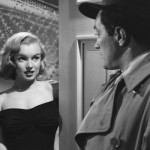Saving Mr. Banks Review
The most cynical viewers will no doubt find John Lee Hancock’s Saving Mr. Banks unbearable. It’s narrative trajectory—stern woman’s icy exterior melts away—is hardly new territory, and the “Disneyfication” of the storyline makes this a film content to merely please, not challenge, its viewers.
Mission accomplished, then. I found Saving Mr. Banks extraordinarily pleasant. It helps that I hold Mary Poppins—which this film chronicles the making of—in high esteem, but let’s not kid ourselves. The reason—not the only reason, mind you, but the biggest by far—Saving Mr. Banks succeeds is Emma Thompson‘s magnificent performance as Poppins author P.L. Travers.
We first meet Travers in her decidedly unfussy London flat, which she’s about to lose because the royalties well for her popular children’s novel, Mary Poppins, has dried up. At her lawyer’s insistence, she flies to Los Angeles and takes a meeting with Walt Disney (Tom Hanks), a man whom Travers can’t stand the idea of—about turning Poppins into a feature film.
Disney’s children love the book, and he’s courted Travers for nearly 20 years. Clearly reluctant to let an importance piece of her being turn into fluffy commercialism or worse (a cartoon), Travers shares some demands with Walt (first names only, please) and the film’s writers—Don DaGradi (Bradley Whitford), Robert Sherman (B.J. Novak), and Richard Sherman (Jason Schwartzman). Some of the stuff is petty—Mr. Banks must not have a mustache, there will be no using the color red in the film—but some of it is rather essential. This is her life. Mary Poppins was real. We meet her, as we do the real Mr. Banks (Colin Farrell), who’s Travers’ father. And the tough author wants the people she cares about to be treated fairly.
For a while, it seems as if Thompson is playing Travers like a rather obvious imitation of what Americans think British women are like. And if so, Hanks is playing Disney like a rather obvious Walt Disney imitation. One of the two—Thompson, if you couldn’t already tell—really opens the character up to the audience. She doesn’t exactly change—I think if we checked back in on her after a few years had passed in her world, she’d be the same Mrs. Travers—but creative collaboration, it seems, is a key to her finding acceptance, and watching her realize that is a joy.
Her equal on screen, then, isn’t Hanks, who skates through the film on the back of his own persona, but rather the trio of Whitford, Novak, and Schwartzman, who are as essential to Travers’ journey as they are hilarious in the film. Paul Giamatti is also important in this small slice of Travers’ life. He plays her Los Angeles-based driver, and while their relationship seems to skip a few important steps before reaching a comfortable destination, it’s nevertheless one that warms the heart.
Intercutting these scenes of Travers at Disney’s studio are ones of a young Travers—nee Ginty or Helen Goff (Annie Rose Buckley)—growing up in Australia. These scenes sprinkle in tidbits of Poppins lore so we know where some of that story’s most crucial or memorable moments are born. And while they’re sometimes fun, Colin Farrell wildly overplays his hand, and the entire idea of these scenes gives the film a mildly off-putting, overwritten feeling.
That said, there’s still plenty to enjoy. The film doesn’t reach for the stars, but there’s something satisfying about the fact that it delivers almost in full on everything it promises. Hanks is a minor letdown, but Thompson more than picks up the slack. Her performance—along with, no joke, a fantastic credits sequence that gives us a taste of this story in the real world—is what makes Saving Mr. Banks the film it is and what makes me so keen to recommend it.
















